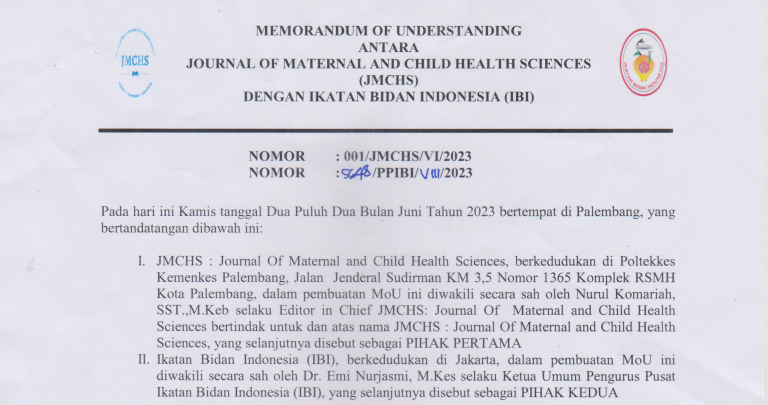The Effect of Slow Deep Breathing Technique on Mother's Anxiety During IUD Contraceptive
Abstract
The IUD is one of the choices of methods or methods of contraception that are used in the long term to regulate distance and delay pregnancy. One of the obstacles in installing an IUD is the level of anxiety felt by the mother. As an effort to reduce anxiety by using slow deep breathing techniques. To determine the effect of the slow deep breathing technique on maternal anxiety during the installation of IUD contraception at PUSRI Palembang Hospital in 2023. This type of research was a quasi-experimental study with a one group pre-test and post-test approach. The sample in this study were mothers who would install IUD contraception as many as 31 respondents. Data analysis using Paired T Test. The average anxiety score before the intervention was 18.84, while the average anxiety score after the intervention was 9.74. There was a decrease in the anxiety level score before and after the intervention was 9.1 with the results of the P value statistical test 0.000. So that there is an effect of the slow deep breathing technique on the anxiety of IUD family planning acceptors. There is a significant difference between pre and post anxiety scores, which means that the slow deep breathing technique can reduce maternal anxiety when installing IUD contraception.
Copyright (c) 2023 Journal of Maternal and Child Health Sciences (JMCHS)

This work is licensed under a Creative Commons Attribution-ShareAlike 4.0 International License.
Authors who publish with this journal agree to the following terms:
- Authors retain copyright and grant the journal right of first publication with the work simultaneously licensed under a Creative Commons Attribution License that allows others to share the work with an acknowledgement of the work's authorship and initial publication in this journal.
- Authors are able to enter into separate, additional contractual arrangements for the non-exclusive distribution of the journal's published version of the work (e.g., post it to an institutional repository or publish it in a book), with an acknowledgement of its initial publication in this journal.
- Authors are permitted and encouraged to post their work online (e.g., in institutional repositories or on their website) prior to and during the submission process, as it can lead to productive exchanges, as well as earlier and greater citation of published work












